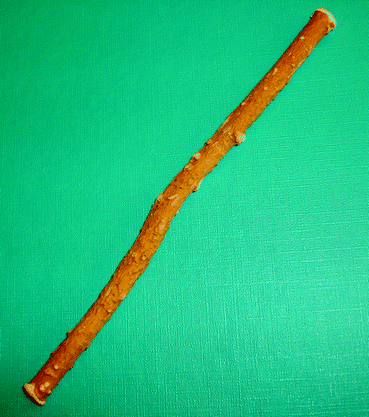Fig. 14.1
Mastic gum; resin pieces from the Pestacia lentiscus tree
Bad breath remedies have been prevalent since the earliest recorded times. The Ebers papyrus, over 3,500 years old (University of Leipzig library), describes aromatic concoctions proposed to counter dental ailments, including swollen gums. Some 2,000 years ago, the Roman perfume entrepreneur Cosmo supposedly sold breath-freshening pastilles to his fellow friends and countrymen. His competitors questioned their efficacy.
Ancient Judaism regarded bad breath as a severe infliction, akin to having lost a limb, or suffering from leprosy. According to the Talmud (dating back over 1,500 years), priests were not allowed to carry out holy duties in the Temple if they had bad breath (Shifman et al. 2002). According to Jewish law, a man who marries a woman and subsequently discovers that she has bad breath can summarily divorce her without even fulfilling the terms of the marriage contract (ketuba). This differs from medieval Welsh law, in which a wife was able to divorce her husband on the grounds of oral malodor (Paul Meara, University of Wales Swansea, personal communication).
According to the Jewish Talmud, working with flax predisposes to bad breath. In ancient times, flax fibers were wet by saliva in order to spin them into a finer yarn. According to the Talmud, this activity damages the woman’s lips and causes bad breath, and therefore a husband may not compel his wife to spin flax (Nahum Ben Yehuda, Bar Ilan University, personal communication).
Specific vegetables are mentioned in the Talmud as bad breath risks, particularly raw peas and extensive consumption of lentils. The Talmud suggests a variety of aromatic spices, including ginger and cinnamon, as oral fresheners. Another recommended remedy is the mastic chewing gum described above. The Talmud states that while frivolous chewing of mastic is forbidden on the Sabbath, it is allowed as a cure for bad breath.
Islam also deals at length with bad breath and oral hygiene. There is the famous story that the prophet Muhammad once asked someone to leave the mosque because of his bad breath. Islam stresses the importance of hygiene, and good smells. A case in point is the siwak (sometimes spelled sewak, or miswak), a short stick that is regarded by Moslems as a holy instrument. By wetting and chewing or pounding on one of the ends, a kind of toothbrush is formed, which can be used to clean both teeth and soft tissue. Siwaks are made from the aerial roots of certain trees and may contain antibacterial agents. Modern mint-flavored siwaks are also available (Fig. 14.2).


Fig. 14.2
Siwak; a stick used by Muslims to clean the mouth
Bad breath is usually considered taboo in Islam, as it is in Judaism. One exception is bad breath due to fasting during the Ramadan, which according to Islamic teaching is considered by Allah to be more esteemed than the smell of roses.
Early Scientific and Medical Literature
In the late eighteenth century, Dr. Joseph W. Howe wrote a medical text on bad breath, which was published in four editions from 1874 to 1898 (“The Breath and the Diseases which give it a fetid odor with directions for treatment”; D. Appleton and company, 1898). Dr. Howe was, inter alia, Professor of Clinical Surgery at Bellevue Hospital Medical College.
According to Dr. Howe, bad breath is liable to occur at all periods of life, and is more common among menfolk. “Yet how few of the afflicted persons detect the cause of their isolation, or recognize the barrier which effectually prevents the approach of those near and dear to them!” He wrote of the difficulty in telling someone that they suffer from bad breath. “With the best intentions in the world, we rarely whisper a word of their disorder or suggest a source of relief. This false kindness – this demoralizing weakness – is universal.”
Dr. Howe clearly linked bad breath to the oral cavity. “When the teeth and mucous membrane of the mouth are kept clean…the offensive odor of the breath will disappear.”
Stay updated, free dental videos. Join our Telegram channel

VIDEdental - Online dental courses


